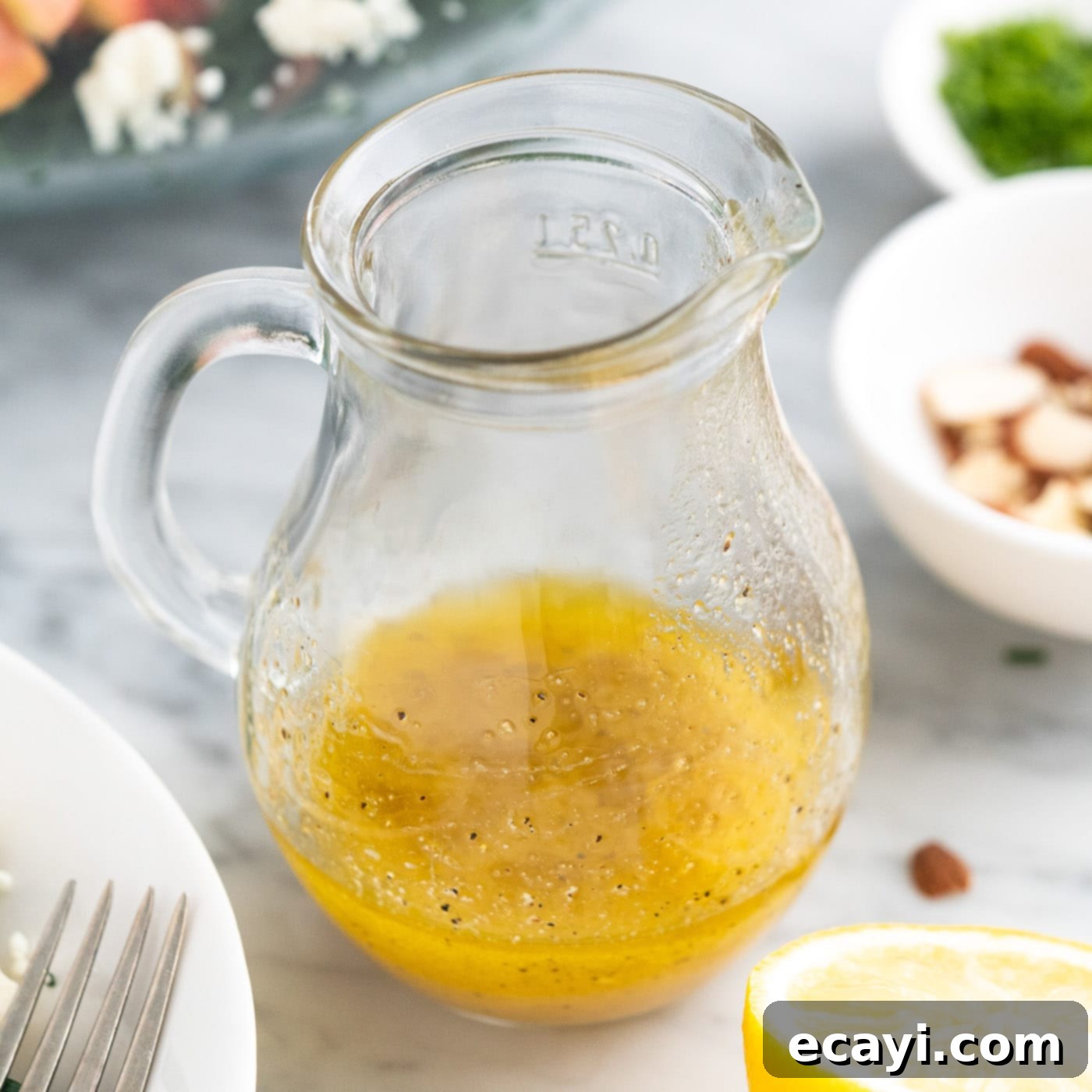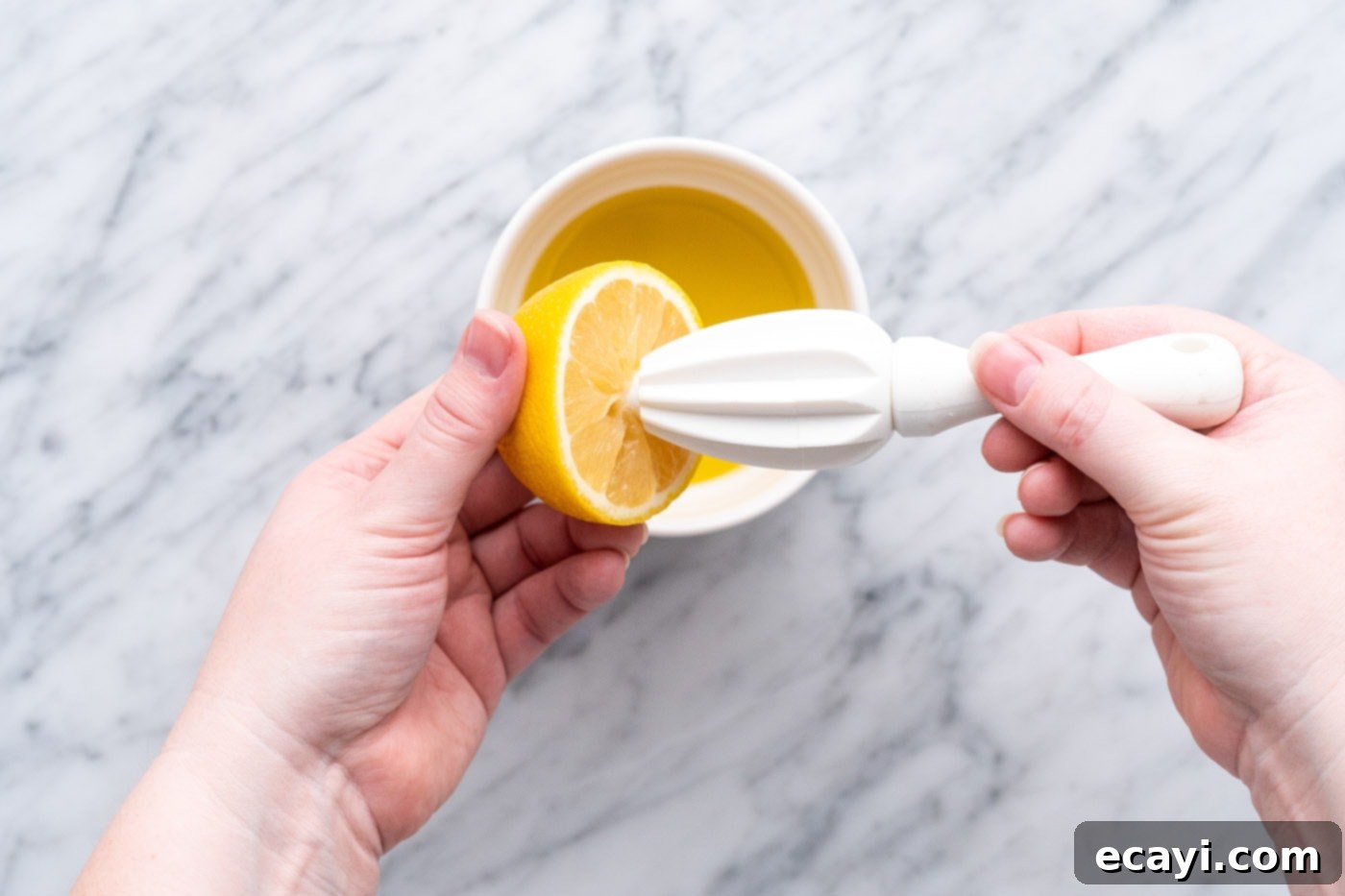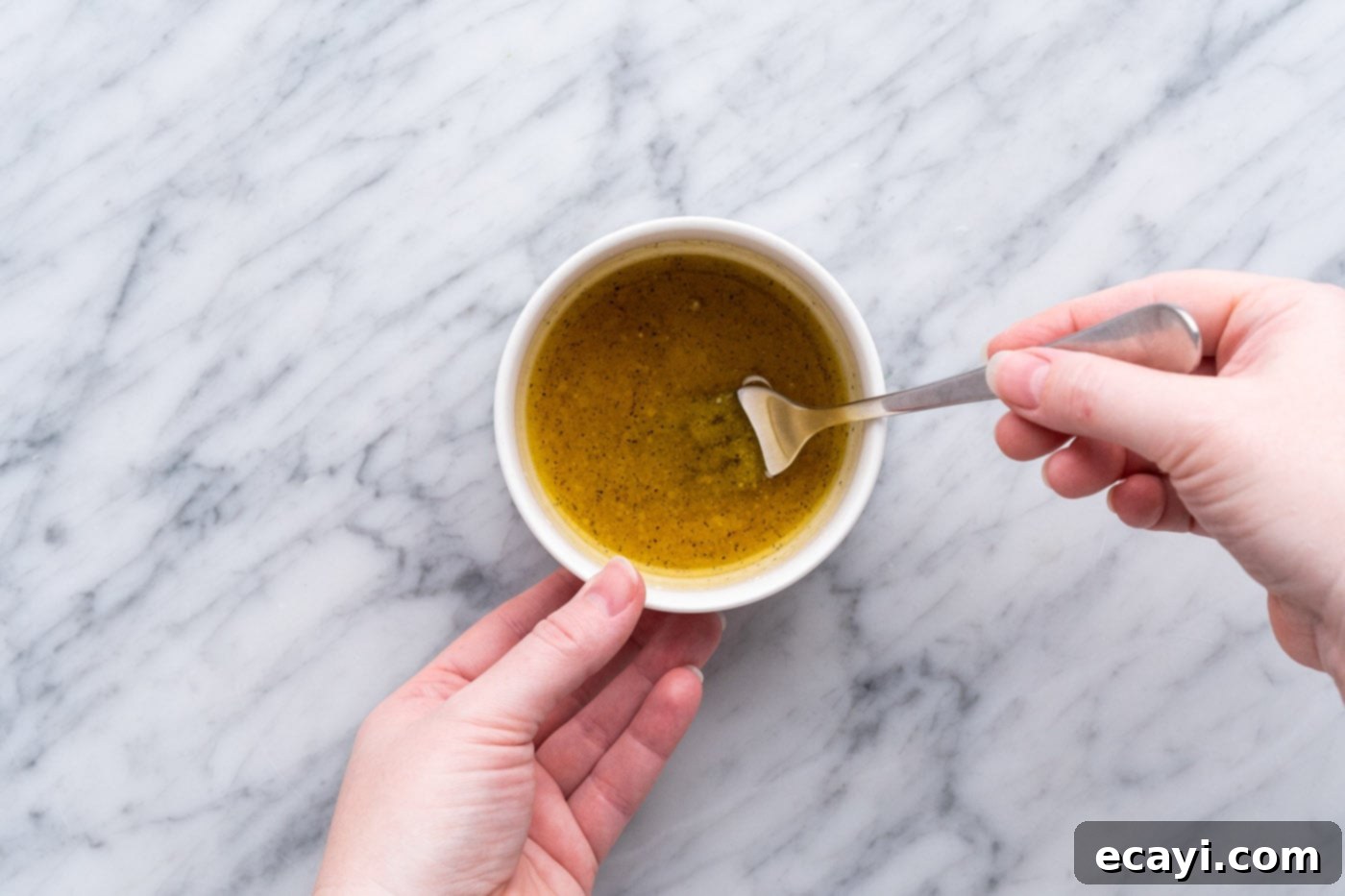Homemade Lemon Salad Dressing: Your Quick & Zesty Vinaigrette Recipe
A zesty and vibrant homemade lemon salad dressing is the ultimate way to bring life to your leafy greens, grilled vegetables, and so much more. In just 5 minutes with a handful of simple ingredients, you can create a refreshing citrus vinaigrette that’s far superior to any store-bought alternative. This easy lemon dressing recipe is a kitchen essential for anyone seeking fresh, wholesome flavors.
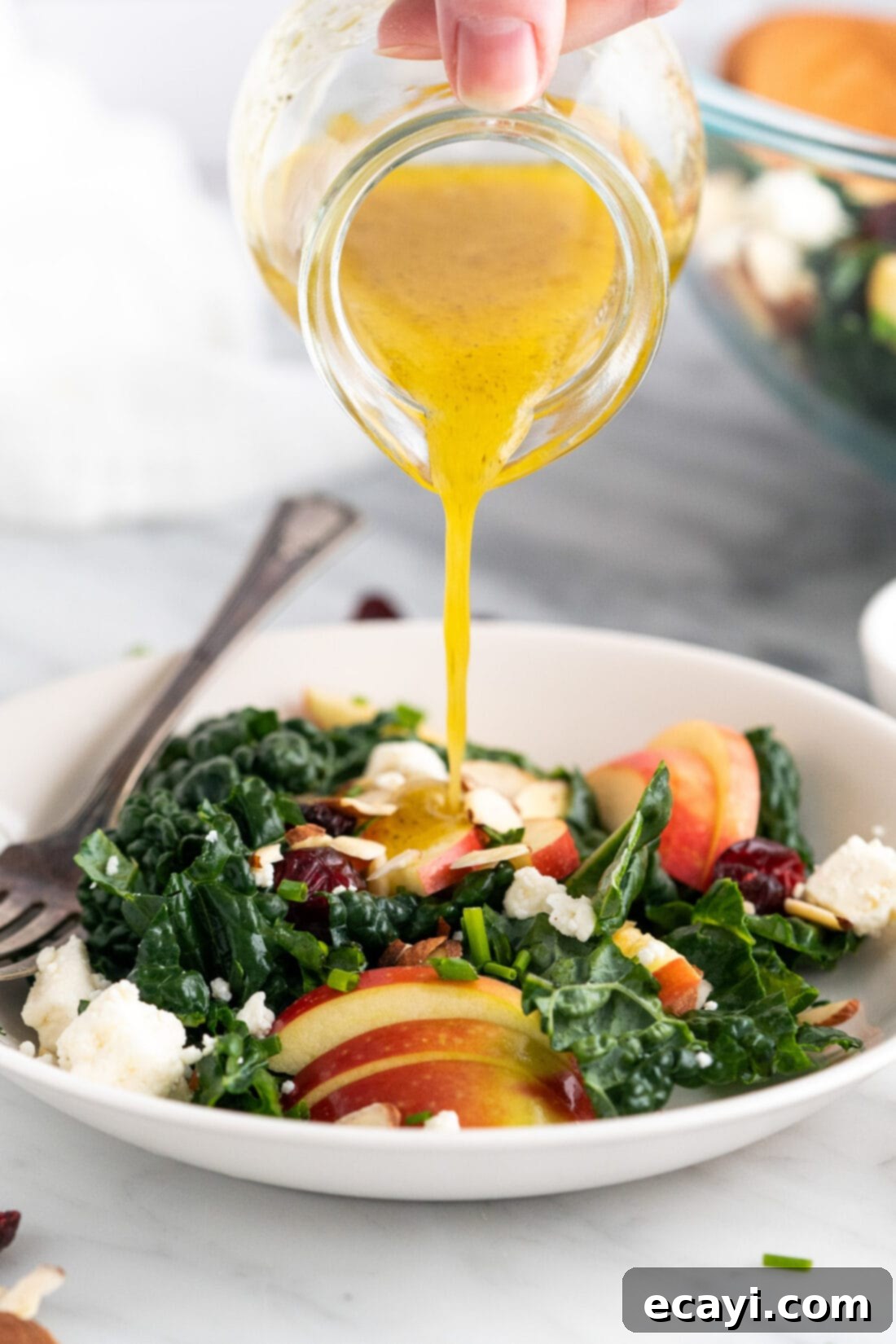
Why This Easy Lemon Salad Dressing Will Become Your Go-To
This fantastic lemon salad dressing is crafted from a simple yet powerful base of fresh lemon juice, high-quality olive oil, a touch of honey for balance, a dollop of Dijon mustard for emulsification and tang, and a pinch of salt and pepper. The magic lies in its simplicity and the quality of fresh ingredients. By whisking these pantry staples together in mere minutes, you’ll have a bright, zippy, and incredibly refreshing dressing ready to elevate your culinary creations all year round.
What makes this homemade lemon vinaigrette truly special is its incredible versatility and health benefits. Unlike many commercial dressings laden with artificial flavors, preservatives, and excessive sugar, this recipe gives you complete control over what goes into your food. It’s naturally gluten-free, and with a simple swap of maple syrup for honey, it can be made vegan. The fresh lemon juice provides a burst of Vitamin C and antioxidants, while extra virgin olive oil contributes healthy monounsaturated fats. This dressing isn’t just delicious; it’s a smart choice for a balanced diet.
We especially adore this lemon vinaigrette tossed into our kale salad, where its bright notes perfectly complement crunchy apples and tangy feta cheese, as beautifully pictured here. However, its divine flavor extends far beyond just kale. Imagine it drizzled over delicate mixed greens, robust pasta salads, grain bowls, or even as a light marinade for chicken or fish. Its clean, vibrant profile makes it a universal crowd-plepleaser that brightens any dish.
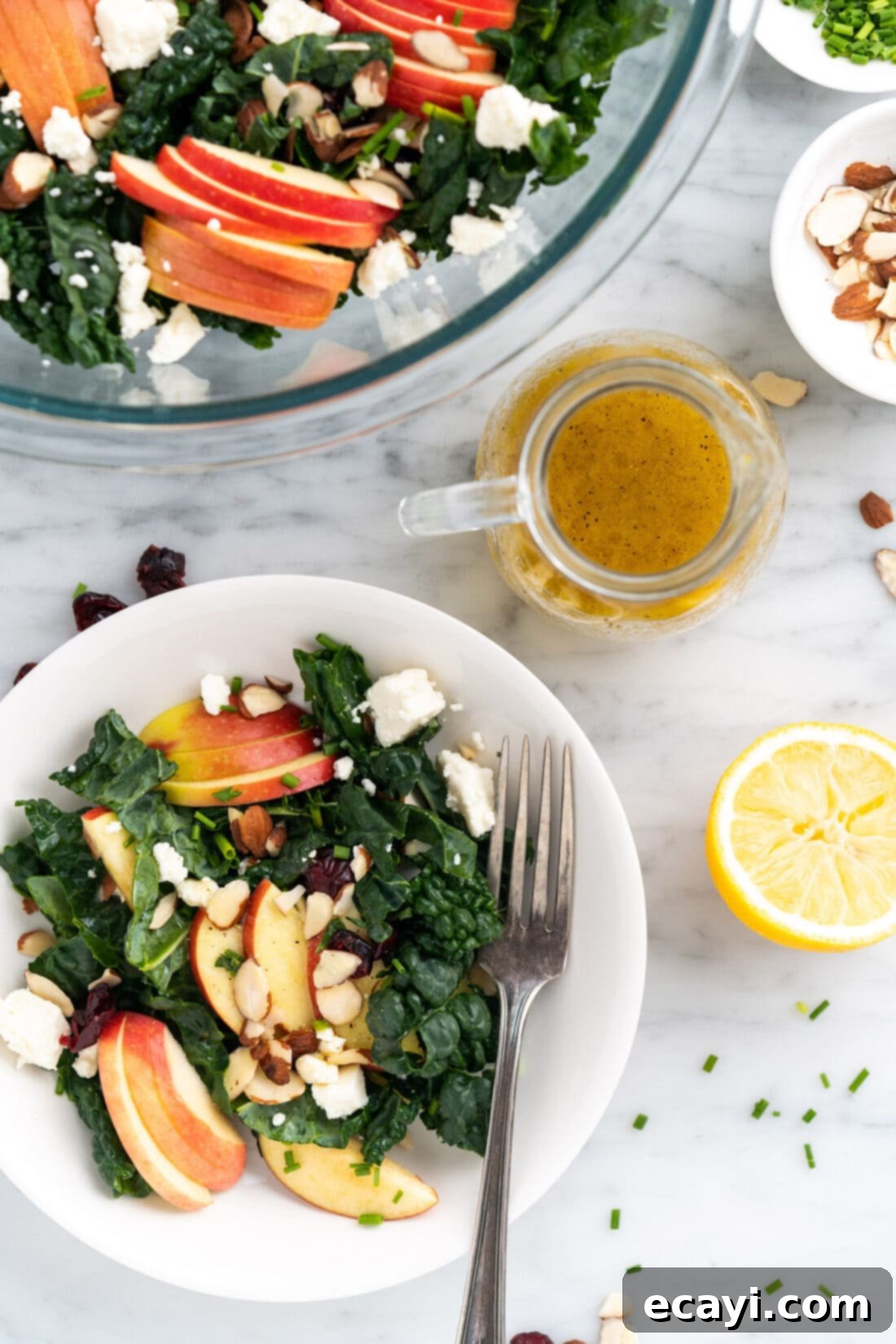
Essential Ingredients for Your Zesty Lemon Vinaigrette
Crafting the perfect homemade lemon salad dressing begins with selecting fresh, high-quality ingredients. While the list is short and sweet, each component plays a crucial role in achieving that desirable balance of flavor and texture. Find all precise measurements and detailed instructions in the printable recipe card at the very end of this article.
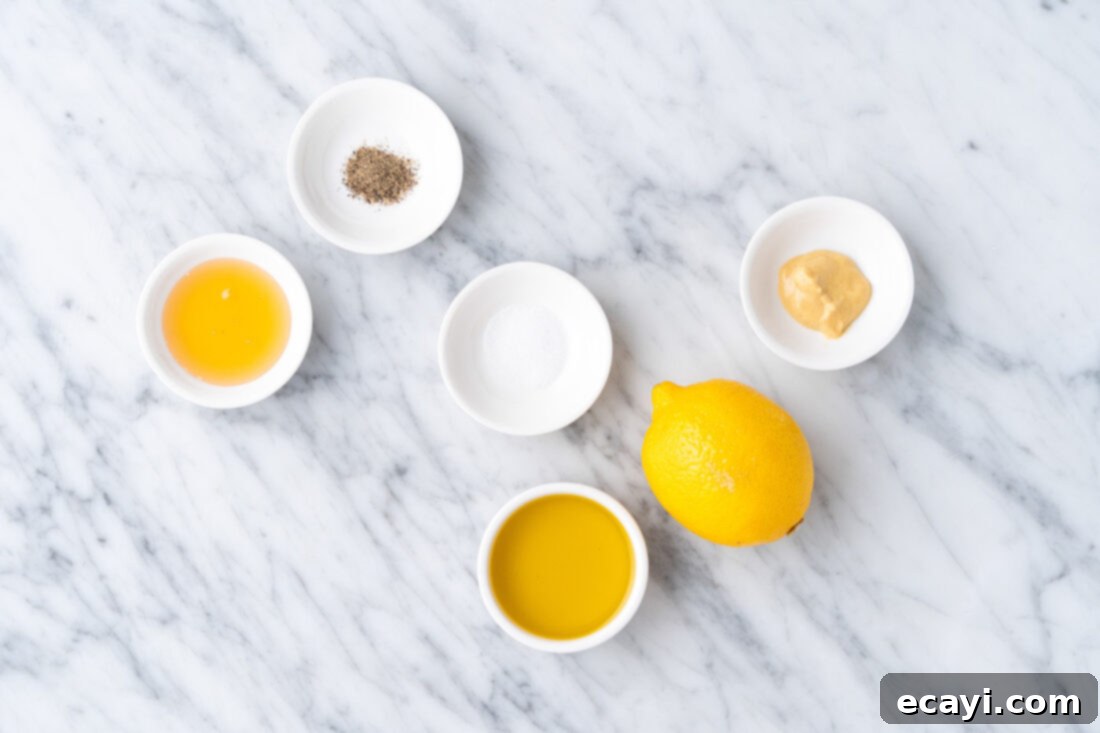
Ingredient Breakdown & Customization Tips
Let’s dive deeper into the key ingredients that make this lemon vinaigrette truly shine, along with some helpful substitution ideas to fit your dietary needs or personal preferences:
Fresh Lemon Juice: This is the star of our dressing, providing that characteristic tangy, bright, and refreshing flavor. It’s paramount to use fresh lemon juice rather than the bottled variety. Trust me, the difference in taste is monumental! Bottled lemon juice often contains preservatives and lacks the vibrant, crisp flavor of freshly squeezed lemons. One regular-sized lemon typically yields 2-3 Tablespoons of juice, which is perfect for this recipe. If you don’t have fresh lemons, lime juice can be a decent substitute for a different citrus twist, though it will alter the flavor profile.
Extra Virgin Olive Oil: The foundation of any good vinaigrette, extra virgin olive oil provides a rich, smooth texture and healthy fats. It also carries additional vitamins and antioxidants, contributing to the dressing’s depth and nutritional value. Choose a good quality extra virgin olive oil for the best flavor. While lighter olive oils can be used, extra virgin offers the most robust taste. For an alternative, a neutral oil like avocado oil or grapeseed oil can work, but you’ll lose some of the signature Mediterranean notes.
Honey: A touch of honey is added to mellow out the natural bitterness of the lemon and create a harmonious balance between sweet and tart. It also contributes to the dressing’s emulsification, helping to bind the oil and vinegar together. If you prefer a vegan option, pure maple syrup or agave nectar can be used as a 1:1 substitute. Adjust the amount to your desired sweetness level.
Dijon Mustard: More than just flavor, Dijon mustard acts as a natural emulsifier in this dressing. It helps to prevent the oil and lemon juice from separating, ensuring a creamy, well-combined vinaigrette. It also adds a subtle tangy, savory kick that rounds out the flavors beautifully. If you don’t have Dijon, a stone-ground mustard can work, but avoid overly spicy or seeded mustards unless you specifically want that flavor profile.
Salt and Black Pepper: These basic seasonings are essential for enhancing all the other flavors. Use fine sea salt or kosher salt, and freshly ground black pepper for the best results. Always taste and adjust to your preference – a well-seasoned dressing is key!
Optional Add-ins for Enhanced Flavor: Feel free to customize your lemon dressing! Consider adding a finely minced garlic clove for an aromatic boost, a pinch of dried herbs like oregano or thyme, or even a sprinkle of red pepper flakes for a subtle heat. Fresh herbs like chopped parsley, dill, or chives can also be stirred in just before serving for an extra layer of freshness.
Crafting Your Homemade Lemon Vinaigrette: Step-by-Step
These step by step photos and instructions are here to help you visualize how to make this recipe. You can Jump to Recipe to get the printable version of this recipe, complete with measurements and instructions at the bottom.
- Add all of your measured ingredients – fresh lemon juice, extra virgin olive oil, honey, Dijon mustard, salt, and pepper – to a small bowl. Alternatively, for minimal cleanup and easy storage, you can add them directly into a glass jar with a tight-fitting lid.

- Using a whisk, vigorously whisk the ingredients together until they are well combined and the dressing appears emulsified – meaning the oil and lemon juice are no longer separated but have formed a homogenous mixture. If using a jar, simply shake it vigorously for about 30-60 seconds until emulsified. Taste the dressing and adjust seasonings (more salt, pepper, or honey) if needed.

- Cover the bowl or jar and refrigerate until you are ready to use. Chilling the dressing allows the flavors to meld beautifully. Give it a good shake or whisk again just before serving, as natural separation may occur.
Frequently Asked Questions & Expert Tips for Perfect Lemon Dressing
This homemade lemon vinaigrette will keep exceptionally well in a sealed jar or any other air-tight container when kept in the refrigerator. It typically lasts for up to 1 week. Over time, the ingredients may naturally separate, so always give it a good shake or whisk before each use to re-emulsify it and ensure a consistent flavor and texture.
While technically possible, we wouldn’t suggest freezing this dressing. The acidity of the lemons can sometimes cause the dressing to become quite bitter once thawed, and the oil and water components will likely separate significantly, resulting in an undesirable texture. It’s best enjoyed fresh within its refrigerated shelf life.
Separation of oil and vinegar is completely natural for vinaigrettes, especially those made without strong artificial emulsifiers. Our recipe uses Dijon mustard to help, but it’s not a permanent bond. Simply shake or whisk your dressing vigorously for 15-30 seconds before serving to bring it back together.
To get the most juice out of your lemons, try rolling them firmly on a countertop for a few seconds before cutting and squeezing. You can also briefly microwave a whole lemon for 10-20 seconds; the heat helps break down the cell walls, making it easier to extract juice. Always have an extra lemon on hand just in case!
Absolutely! If you prefer a dressing with less sweetness or want to avoid honey, you can simply omit it. The dressing will be more tart, which some people prefer. You could also use a tiny pinch of sugar or a sugar substitute if you still want a hint of sweetness without honey.
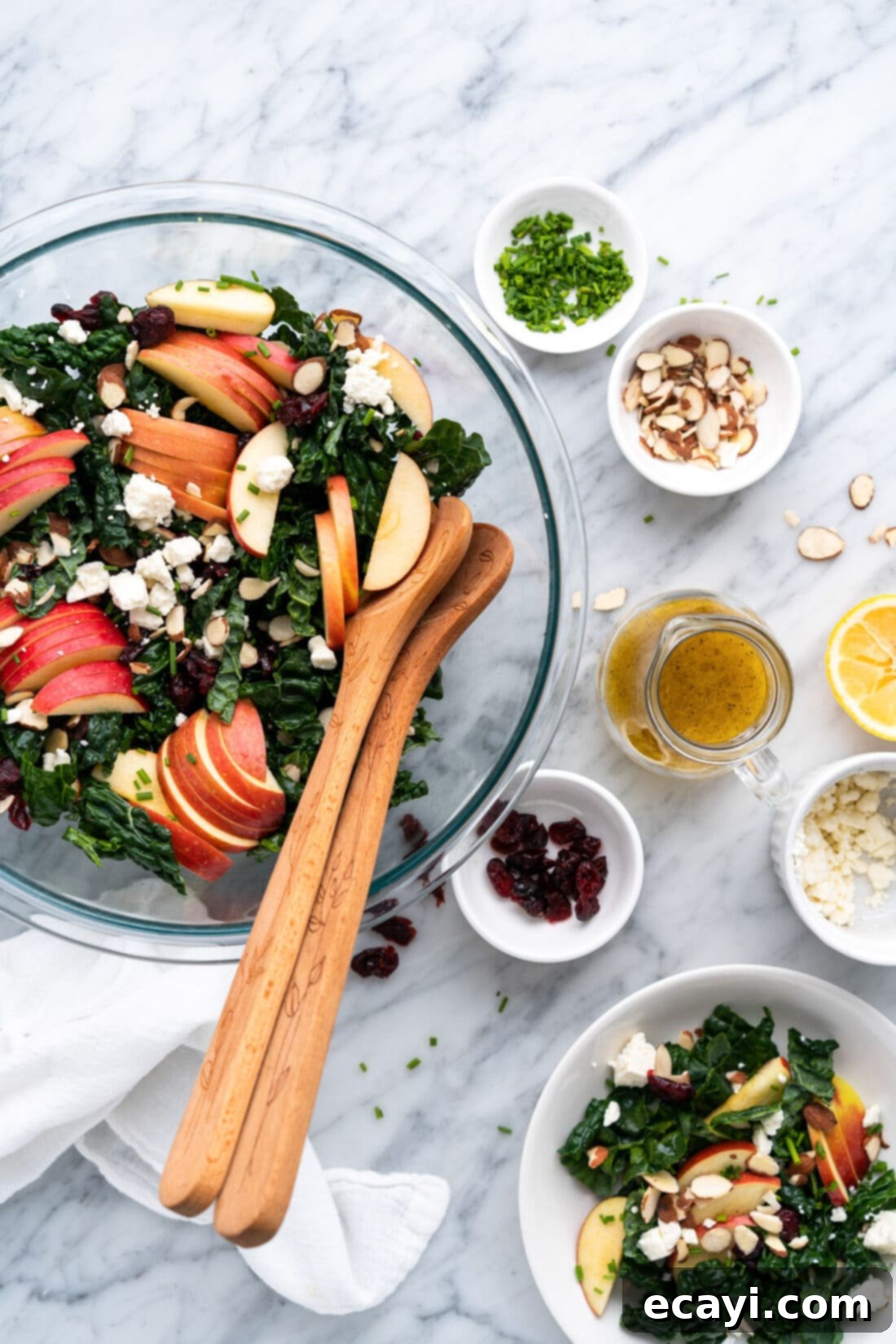
Versatile Serving Suggestions for Lemon Salad Dressing
This easy lemon vinaigrette is incredibly versatile and can be enjoyed in countless ways beyond just a simple salad. Its bright, clean flavor pairs wonderfully with a wide array of dishes. Here are some inspiring serving suggestions to make the most of your homemade lemon salad dressing:
- Leafy Green Salads: Of course, it’s perfect for any type of green salad. Serve it over crisp romaine, tender butter lettuce, or nutrient-rich spinach. It’s particularly fantastic with our kale salad, which is loaded with rich flavors and textures.
- Fruit Salads: For a refreshing twist, try drizzling it over a fresh blueberry salad with romaine lettuce, or even a mixed fruit salad containing berries, melon, and citrus segments.
- Grilled Vegetables: Brush this lemon dressing over asparagus, zucchini, bell peppers, or corn before grilling for a vibrant flavor, or toss it with roasted vegetables like broccoli, cauliflower, or Brussels sprouts after they come out of the oven.
- Grain Bowls & Pasta Salads: Elevate your quinoa, farro, or couscous bowls with a generous drizzle. It’s also a fantastic addition to cold pasta salads, adding a bright, zesty counterpoint to other ingredients.
- Protein Enhancer: Use it as a light marinade or finishing sauce for baked or grilled chicken, fish (especially salmon or white fish), or shrimp. The lemon helps tenderize and add incredible flavor.
- Side Dish Brightener: Drizzle it over sliced cucumbers, fresh tomatoes, or blanched green beans for a simple yet elegant side dish or appetizer.
- Avocado Toast: A tiny splash over your avocado toast can add an unexpected zing that takes it to the next level.
The possibilities are truly endless with this delightful lemon dressing. Enjoy experimenting and discovering your favorite ways to incorporate its refreshing flavor into your daily meals!
Discover More Delicious Homemade Salad Dressing Recipes
If you’ve enjoyed making this easy lemon vinaigrette, you’ll love exploring other homemade dressing options. Crafting your own dressings is a simple way to control ingredients and elevate the flavor of any meal. Here are a few more recipes to add to your collection:
- Classic Blue Cheese Dressing
- Creamy Dill Dressing
- Buttermilk Ranch Dressing
- Sweet Blueberry Vinaigrette Salad Dressing
- Rich Balsamic Vinaigrette
Each of these recipes offers a unique flavor profile to complement different dishes and moods, ensuring you always have the perfect dressing on hand.
I love to bake and cook and share my kitchen experience with all of you! Remembering to come back each day can be tough, that’s why I offer a convenient newsletter every time a new recipe posts. Simply subscribe and start receiving your free daily recipes!
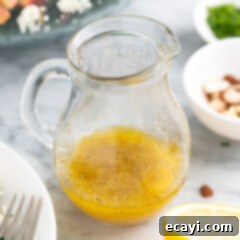
Lemon Salad Dressing
IMPORTANT – There are often Frequently Asked Questions within the blog post that you may find helpful. Simply scroll back up to read them!
Print It
Pin It
Rate It
Save It
Saved!
Prevent your screen from going dark
Course:
Condiments
Cuisine:
American
6
servings
5
minutes
69
Amanda Davis
Ingredients
-
2
Tablespoons
fresh lemon juice -
3
Tablespoons
extra virgin olive oil -
½
Tablespoon
honey -
1
teaspoon
Dijon mustard -
¼
teaspoon
salt -
⅛
teaspoon
black pepper
Things You’ll Need
-
Whisk
Before You Begin
- It’s best to use fresh lemon juice as opposed to the bottled variety. Trust me, you can taste the difference! One regular-sized lemon will yield 2-3 Tablespoons of juice.
- The honey in this dressing mellows out the bitterness while the Dijon adds plenty of flavor and creaminess. Extra virgin olive oil packs in additional vitamins and antioxidants while creating depth as the base of this recipe.
- This homemade lemon vinaigrette will keep well in a sealed jar or air-tight container kept in the refrigerator for up to 1 week. Give it a good shake before using.
Instructions
-
Add all ingredients to a small bowl or glass jar, and whisk or shake together to combine. Refrigerate until using.
Nutrition
Serving:
1
serving
|
Calories:
69
cal
|
Carbohydrates:
2
g
|
Protein:
0.1
g
|
Fat:
7
g
|
Saturated Fat:
1
g
|
Polyunsaturated Fat:
1
g
|
Monounsaturated Fat:
5
g
|
Sodium:
106
mg
|
Potassium:
8
mg
|
Fiber:
0.1
g
|
Sugar:
2
g
|
Vitamin A:
1
IU
|
Vitamin C:
2
mg
|
Calcium:
1
mg
|
Iron:
0.1
mg
Tried this Recipe? Pin it for Later!
Follow on Pinterest @AmandasCookin or tag #AmandasCookin!
The recipes on this blog are tested with a conventional gas oven and gas stovetop. It’s important to note that some ovens, especially as they age, can cook and bake inconsistently. Using an inexpensive oven thermometer can assure you that your oven is truly heating to the proper temperature. If you use a toaster oven or countertop oven, please keep in mind that they may not distribute heat the same as a conventional full sized oven and you may need to adjust your cooking/baking times. In the case of recipes made with a pressure cooker, air fryer, slow cooker, or other appliance, a link to the appliances we use is listed within each respective recipe. For baking recipes where measurements are given by weight, please note that results may not be the same if cups are used instead, and we can’t guarantee success with that method.
